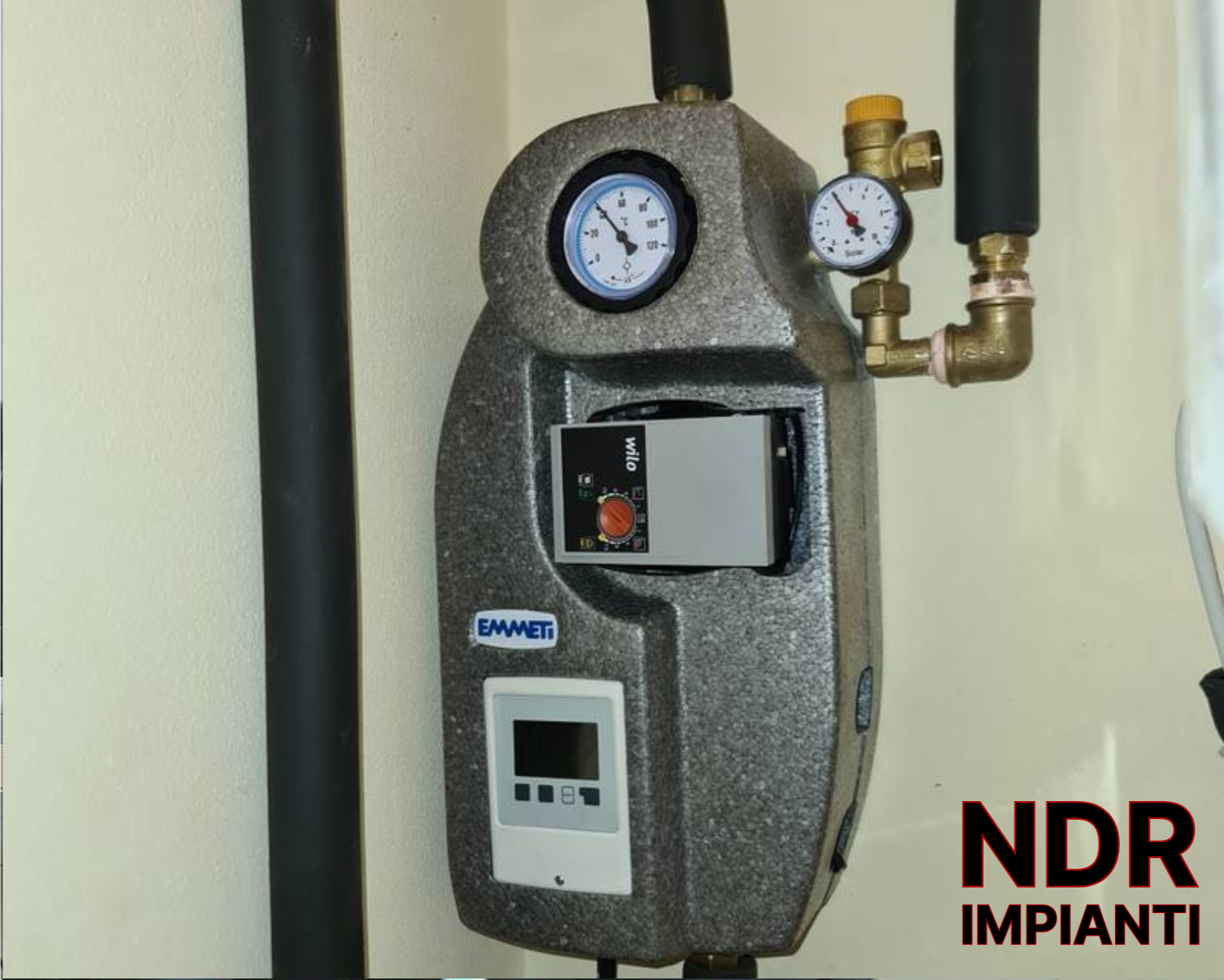Solar Thermal: How It Works, Benefits, and When It Really Pays Off ☀️
This technology is proven and highly effective for producing domestic hot water (DHW) and, in some cases, for space heating.
In recent years, with rising energy costs and a push toward efficiency, more and more families and businesses are adopting solar thermal systems to reduce consumption and environmental impact.

Let’s take a detailed look at how solar thermal works, the types of systems, advantages, costs, and when it’s really worth installing.
1. What Is Solar Thermal and How Does It Work?
Solar thermal is a system that uses solar energy to heat a heat-transfer fluid, which then transfers heat to domestic hot water or a heating system.
It’s a simple but highly effective system, able to reduce hot water costs by up to 70% annually.
Main uses:
- Domestic hot water (showers, sinks, household use).
- Low-temperature heating (radiant panels, underfloor systems).
- Pools, to keep the temperature constant.
Main components of a solar thermal system:
- Solar collectors: capture solar energy and transfer it to the heat-transfer fluid.
- Storage tank: stores the produced hot water.
- Circulation pump: present in forced circulation systems.
- Heat exchanger: transfers energy from the fluid to the domestic water.
- Integration system: boiler or electric resistance for cloudy days.
2. Types of Solar Thermal Systems
There are two main types, with differences in operation, efficiency, and cost:
Natural Circulation System
- Operation: uses the density difference between hot and cold fluid.
- Pros: low cost, simplicity, reliability.
- Cons: less efficient in winter or cold areas.
Forced Circulation System
- Operation: uses an electric pump to circulate the fluid.
- Pros: high efficiency, more flexible, ideal for large families.
- Cons: higher cost and requires electronic components.
3. Advantages of Solar Thermal ☀️
- ✅ Energy savings: up to 70% less for hot water costs.
- ✅ Clean and renewable energy: reduces CO₂ emissions.
- ✅ Low maintenance: only requires periodic checks.
- ✅ Increases property value: improves energy class and building appeal.
- ✅ Access to incentives: 65% Ecobonus, Thermal Account, Renovation Bonus.
4. When Is It Worth Installing?
A solar thermal system is worth it if:
- You have a high consumption of domestic hot water (large families, B&Bs, agritourisms).
- Your house is well exposed to the sun.
- You want to reduce dependence on gas or electricity for hot water.
- You’re renovating your home with energy efficiency in mind.
- You have a low-temperature system (e.g., underfloor heating).
It’s not recommended if:
- You live in an area with little sun or constant shading.
- You have little roof space or architectural constraints.
- Your hot water needs are very low and irregular.
5. How Much Does a Solar Thermal System Cost?
Costs vary depending on the type of system and its size:
| System Type | Average Cost |
|---|---|
| Natural circulation | €1,500 – €3,000 |
| Forced circulation | €3,500 – €7,000 |
With government incentives you can recover up to 65% of the expense through:
- ✅ Ecobonus: 65% tax deduction over 10 years.
- ✅ Thermal Account: direct reimbursement in a short time.
6. Frequently Asked Questions About Solar Thermal (FAQ) ❓
- Does it work in winter?
Yes, but with lower efficiency. In cold months, the integration system (boiler or electric resistance) kicks in. - Can I use it for heating?
Yes, but only if combined with low-temperature systems such as radiant panels. Not suitable for traditional radiators. - How much roof space is needed?
On average 2–4 m² for a family of 2–4 people. - Do I need to clean the panels?
Cleaning is recommended every 1–2 years, especially in dusty areas. - Is it worth it in areas with little sun?
It can make sense if well sized and with enough storage, but the output will be lower compared to high-sun areas.
7. Solar Thermal vs. Photovoltaic ⚡
| Feature | Solar thermal | Photovoltaic |
|---|---|---|
| Energy produced | Thermal (heat) | Electric |
| Main use | Domestic hot water | Appliances, pumps, lighting |
| Efficiency | High (70–80%) | Medium (15–22%) |
| System cost | Lower | Higher |
| Integration with boiler | Yes | No (better with heat pump) |
8. Conclusion
Solar thermal is a reliable, sustainable, and economically advantageous technology. Thanks to the possibility of accessing incentives such as the Thermal Account or the Ecobonus, payback times are short and efficiency is guaranteed over time.
If you’re planning a new home or renovating to improve its energy class, seriously consider installing a solar thermal system, especially if you already have a low-temperature system like radiant panels or a heat pump.
A smart choice for your wallet and the environment!

